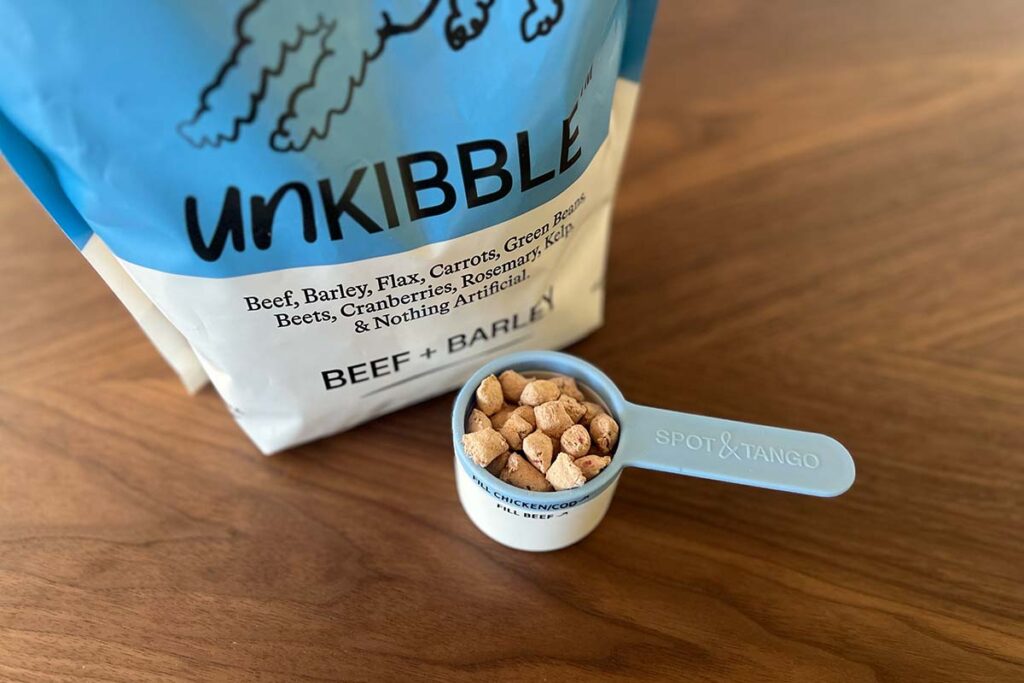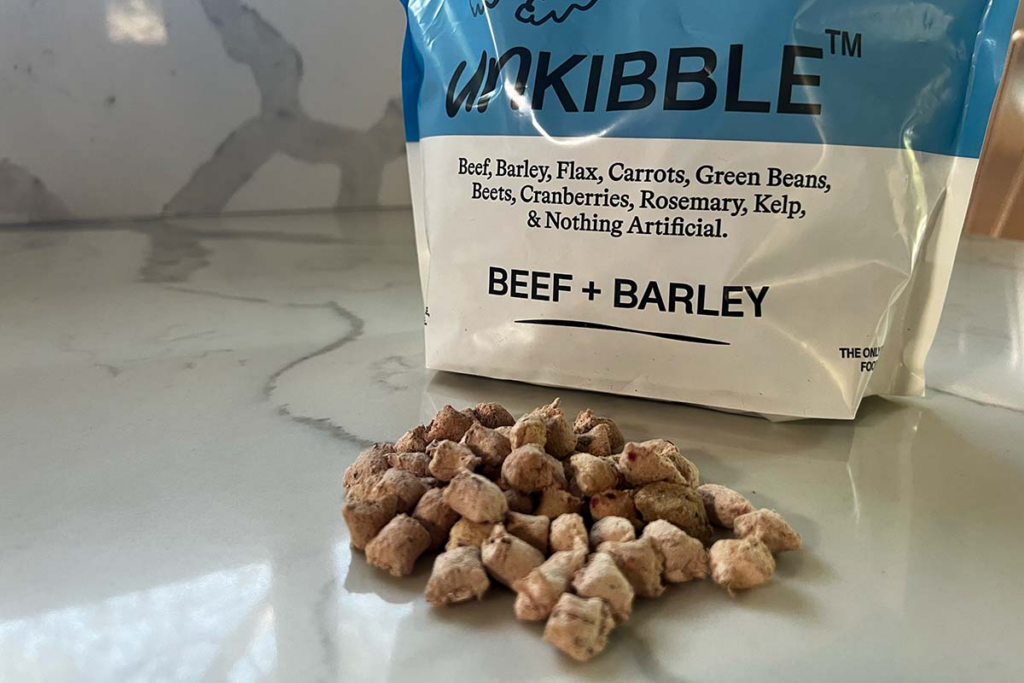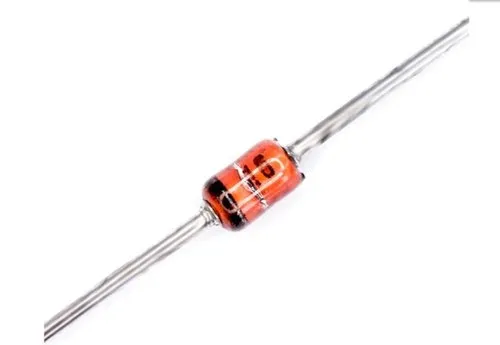
unkibble
In recent years, pet owners have become more discerning about what goes into their pets’ food. From grain-free diets to raw food options, pet nutrition has seen a significant shift towards healthier, more natural alternatives. One brand that has been at the forefront of this revolution is Unkibble—a fresh, raw, and nutritious food option that’s designed to meet your pet’s natural dietary needs. This article delves into what Unkibble is, its benefits, how it compares to traditional kibble, and why more pet owners are choosing it as a healthier option for their furry friends.
What is Unkibble?

Unkibble is a new wave in pet nutrition—combining the best aspects of raw, freeze-dried food with the convenience of kibble. Traditional kibble is often packed with fillers, preservatives, and synthetic ingredients that can be harmful to pets in the long run. In contrast, Unkibble uses human-grade, raw ingredients that preserve the nutritional value of the food while being easy to serve and store. The key difference here is in the preparation: instead of being baked at high temperatures, Unkibble ingredients are freeze-dried to lock in nutrients, providing a fresh and healthy alternative to processed foods.
While traditional kibble is typically made with low-quality meat and high amounts of grains, Unkibble is designed to mimic the natural diet of a carnivore—mainly meat, organs, and bone. This raw food approach helps to maintain the nutritional integrity of the ingredients, which results in a product that’s closer to what your pet would eat in the wild, without the preservatives, additives, or fillers.
Unkibble is available for both dogs and cats, making it versatile for pet owners with multiple animals. It’s also free from harmful chemicals, grains, and gluten, making it suitable for pets with allergies or sensitivities.
The Benefits of Unkibble for Pets
One of the primary reasons pet owners are shifting to Unkibble is the host of health benefits it offers to pets. Raw food diets have been proven to provide a range of advantages over traditional processed foods, from improved digestion to better skin and coat health.
Digestive Health and Nutrient Absorption
One of the standout benefits of Unkibble is its positive impact on digestive health. Many pets that suffer from sensitive stomachs or food allergies find relief when switched to a raw food diet like Unkibble. The natural enzymes in raw food help improve digestion, reduce bloating, and make nutrient absorption more efficient. The lack of fillers in Unkibble means that pets aren’t wasting energy digesting ingredients their bodies can’t process, allowing them to get more out of every meal.
Healthy Skin and Coat
Another notable benefit is the improvement in your pet’s skin and coat. Pets fed with a raw food diet often show a noticeable difference in their fur, which becomes shinier, softer, and healthier. The high-quality fats and proteins found in Unkibble help nourish the skin and promote a glossy coat. Moreover, pets on raw diets are less likely to experience dry or itchy skin, a common issue with traditional kibble-based foods.
Weight Management and Energy Levels
Unkibble is also beneficial for pets struggling with obesity or weight management. Since the food is free from empty carbohydrates and artificial fillers, it’s more nutrient-dense and lower in calories, which helps prevent overeating. Pets fed with Unkibble often exhibit more energy and improved stamina, as they’re getting the right kind of fuel that their bodies require. This can lead to better overall health, including joint mobility and stronger muscles.
How Unkibble Works: Feeding Your Pet the Right Way
Feeding your pet Unkibble may seem like a shift in routine, but it’s surprisingly simple once you understand how it works. Unkibble comes in easy-to-serve portions that don’t require extensive preparation, making it an incredibly convenient option for busy pet owners. Whether you’re at home or on the go, Unkibble’s freeze-dried format ensures that you can easily feed your pet fresh, healthy food without the hassle of cooking or refrigeration.
Transitioning to Unkibble
Transitioning your pet to Unkibble requires a little patience. If your pet has been eating traditional kibble for a while, it’s important to gradually introduce Unkibble to avoid digestive upset. Start by mixing a small portion of Unkibble into your pet’s regular food and gradually increase the amount over the course of 7-10 days. This helps your pet’s digestive system adjust to the new food while avoiding any gastrointestinal issues.
Portion Control and Feeding Guidelines
Portion control is essential when feeding your pet Unkibble. While the brand offers general feeding guidelines based on your pet’s size, age, and activity level, it’s important to monitor your pet’s body condition and adjust portions as needed. The high-protein nature of Unkibble means your pet may require smaller portions compared to traditional kibble. Always refer to the recommended feeding guidelines and consult your veterinarian to ensure your pet is getting the appropriate amount of food.
Is Unkibble Right for Your Pet?
Before making the switch to Unkibble, it’s important to evaluate whether it’s the right choice for your pet’s specific needs. While Unkibble is generally a great option for most pets, certain considerations should be kept in mind.
Ideal Pets for Unkibble
Unkibble is a great option for healthy, adult pets, but it’s especially beneficial for dogs and cats with food sensitivities, allergies, or digestive issues. The absence of grains, gluten, and fillers makes it suitable for pets with sensitive stomachs or skin. Additionally, pets suffering from obesity, weight issues, or low energy levels can benefit from the nutrient-dense ingredients in Unkibble.
Consultation with a Veterinarian
Before transitioning your pet to a raw food diet, it’s always a good idea to consult with your veterinarian, particularly if your pet has any pre-existing health conditions. While raw food diets are beneficial for many pets, pets with certain medical issues may require special dietary needs that Unkibble can’t fully address on its own.
Unkibble vs. Traditional Kibble: Which One is Better?
When it comes to Unkibble vs. traditional kibble, there’s a clear winner for health-conscious pet owners. Traditional kibble is often made with cheap fillers like corn, soy, and by-products, while Unkibble uses fresh, raw ingredients that better replicate a pet’s natural diet. The lack of grains and artificial additives in Unkibble gives it a clear nutritional advantage over kibble, which often contains empty calories and preservatives.
Nutritional Value
Unkibble provides a higher concentration of proteins, healthy fats, and essential nutrients, making it a more wholesome choice for your pet’s long-term health. Kibble, on the other hand, is often processed at high temperatures, which can destroy the nutritional value of key ingredients. While kibble may be more convenient and cost-effective, Unkibble offers a level of quality that traditional pet food brands simply can’t match.
Cost Consideration
There’s no denying that Unkibble can be pricier than regular kibble, but many pet owners are willing to pay a little extra for better quality ingredients and improved health benefits. Additionally, since Unkibble’s nutrient-dense formula means your pet needs to eat smaller portions, the cost may not be as high as it first seems.
Conclusion
In conclusion, Unkibble offers a revolutionary approach to pet nutrition, providing your pet with high-quality, raw, and natural ingredients that are closer to their ancestral diet. The benefits of switching to Unkibble—ranging from improved digestion to a shinier coat—make it a compelling choice for pet owners looking to give their furry friends the best possible nutrition. If you’re ready to make the change, always remember to transition gradually and consult your veterinarian for personalized advice.
Unkibble is more than just food; it’s a lifestyle choice for pets, giving them the nutrition they need for a healthy, active life. So, why not make the switch and see how your pet thrives on a diet that’s as fresh as it gets?






